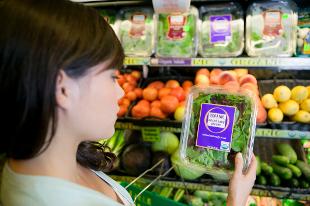Confcommercio: more than 1 out of 4 Italian buy at the counterfeit market.Confcommercio: più di 1 italiano su 4 compra al mercato del falso.

Counterfeit products are purchased more clothing, food to follow those. For three out of four consumers buy illegal products or services irregular use is quite normal and is useful for those who are in financial difficulty Buy illegal is increasingly common: 1 of 4 Italian – according to the latest report of Confcommercio – said they had bought fake products. 27% of consumers have bought at least once in 2014 a product or service illegal (+ 1.4% compared to 2013). Fake products Hottest Among the counterfeit products most purchased clothing (46.6% this year compared to 41.2% in 2013, an increase of more than 5%); food (38% in 2014 against 28.1% a year earlier, an increase of about 10%); watches, jewelry, eyewear (33% this year compared to 29.2% in 2013); leather goods (24.9% in 2014 against 26.9% last year); shoes and footwear (23.3% this year compared to 21% last year); drugs and parapharmaceutical products (21.2% versus 15.1% in 2013). Food and drugs on the rise are the main findings of illegality, counterfeiting and illegal in view of the national day of action “Legality, I like” to be held on 26 November. To underline the growth of the purchase of food (+ 9.9%) and counterfeit pharmaceuticals (+ 6.1%), a sign of how the crisis is impacting on household budgets. For three out of four consumers purchase products illegal or irregular use of services is quite normal and is useful for those who are in financial difficulty. “Unfair competition” Two out of three companies are considered damaged by the action of lawlessness (+ 4% compared to 2013), while more than 80% of the companies the economic crisis is benefiting the market for illegal and improper exercise professions. Among the most harmful effects produced by the various forms of illegal trade business, tourism and services indicate mostly unfair competition (60.8%).
I prodotti contraffatti più acquistati sono d’abbigliamento, a seguire quelli alimentari. Per tre consumatori su quattro comprare dei prodotti illegali o utilizzare servizi irregolari è piuttosto normale ed è utile per chi è in difficoltà economica
Comprare illegale è sempre più frequente: 1 italiano su 4 – secondo l’ultimo rapporto della Confcommercio – ha dichiarato di aver acquistato prodotti falsi. Il 27% dei consumatori ha comprato almeno una volta nel 2014 un prodotto o un servizio illegale (+1,4% rispetto al 2013). I prodotti falsi più acquistati Tra i prodotti contraffatti più acquistati l’abbigliamento (46,6% quest’anno rispetto al 41,2% del 2013, con un aumento di oltre il 5%); i prodotti alimentari (38% nel 2014 contro il 28,1% dell’anno precedente, con un aumento del 10% circa); orologi, gioielli, occhiali (33% quest’anno rispetto al 29,2% del 2013); prodotti di pelletteria (24,9% nel 2014 contro il 26,9% dello scorso anno); scarpe e calzature (23,3% quest’anno rispetto al 21% dell’anno precedente); farmaci e prodotti parafarmaceutici (21,2% contro il 15,1% del 2013). Alimentari e farmaci in aumento Questi i principali risultati dell’indagine sull’illegalità, la contraffazione e l’abusivismo in vista della giornata di mobilitazione nazionale “Legalità, mi piace” che si terrà il 26 novembre. Da sottolineare la crescita dell’acquisto di alimentari (+9,9%) e di farmaceutici contraffatti (+6,1%), a testimonianza di quanto la crisi stia incidendo sui bilanci delle famiglie. Per tre consumatori su quattro l’acquisto dei prodotti illegali o l’utilizzo di servizi irregolari è piuttosto normale ed è utile per chi è in difficoltà economica. “Concorrenza sleale” Due imprese su tre si ritengono danneggiate dall’azione dell’illegalità (+4% rispetto al 2013), mentre per oltre l’80% delle imprese la crisi economica sta avvantaggiando il mercato dei prodotti illegali e l’esercizio abusivo delle professioni. Tra gli effetti più dannosi prodotti dalle diverse forme di illegalità le imprese del commercio, del turismo e dei servizi indicano principalmente la concorrenza sleale (60,8%).

